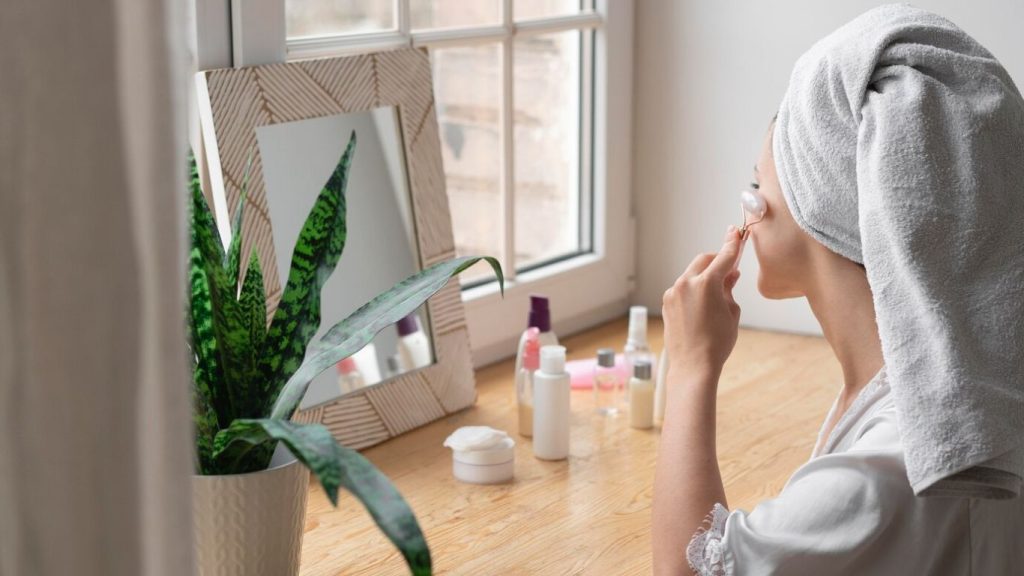A radiant, healthy complexion often starts with one foundational step: cleansing. Yet, with the market flooded with countless cleansers and methods, one can feel overwhelmed. This guide will dive deep into the world of cleansers, ensuring that you not only choose the right product but also use it correctly to unveil fresh, glowing skin.
Understanding the Role of a Cleanser
Cleansers play a pivotal role in skincare, designed to:
- Remove Dirt and Impurities: Throughout the day, our skin accumulates dirt, oil, sweat, and makeup.
- Prevent Clogged Pores: By clearing out impurities, cleansers prevent pore blockages, a prime cause of acne.
- Prep the Skin: A freshly cleansed face absorbs subsequent skincare products better, amplifying their benefits.

Types of Cleansers: Finding Your Match
Not all cleansers are created equal. Different formulas cater to various skin types and concerns.
Gel Cleansers
- Best for: Oily and combination skin.
- Characteristics: Clear and gel-like. Effective at deep-cleaning pores and reducing excess oil.
Cream Cleansers
- Best for: Dry or sensitive skin.
- Characteristics: Thick and creamy. They hydrate and cleanse simultaneously, leaving skin soft.
Foam Cleansers
- Best for: Oily and acne-prone skin.
- Characteristics: Start as cream or gel but turn foamy when mixed with water. They offer a thorough cleanse.
Oil Cleansers
- Best for: Most skin types, especially those using waterproof makeup.
- Characteristics: Use the principle of ‘like attracts like’. Oil in the cleanser attracts skin’s oil, offering deep cleansing without drying out.
Micellar Water
- Best for: Sensitive skin or for light makeup days.
- Characteristics: Made up of micelles (tiny oil molecules) in soft water. They cleanse without the need for rinsing.
Bar Cleansers
- Best for: Those preferring a sustainable option.
- Characteristics: Solid bars (like soap but more skin-friendly). Modern formulations ensure they don’t strip the skin’s natural oils.

Steps to Use a Cleanser Correctly
Start with Clean Hands
Ensure your hands are clean to avoid transferring additional dirt to your face.
Wet Your Face
Using lukewarm water, wet your face. Avoid hot water, as it can strip the skin of its natural oils.
Apply Cleanser
Dispense a dime-sized amount onto your fingertips. For oil cleansers, start with dry hands and a dry face.
Massage Gently
Use gentle circular motions, focusing on areas with more dirt or makeup. Don’t scrub aggressively. Typically, 30 seconds to a minute is sufficient.
Rinse Thoroughly
Ensure all the product is rinsed off. Residue can lead to breakouts or skin irritations.
Pat Dry
Using a clean towel, pat your skin dry gently. Avoid rubbing or dragging the skin.
Follow-up
After cleansing, proceed with the next steps in your skincare routine, typically toning, serum application, moisturizing, and sunscreen in the morning.
Additional Tips for Optimal Cleansing
Double Cleansing
Originating from Korean skincare routines, this involves using an oil-based cleanser first to remove makeup and pollutants, followed by a water-based cleanser. This ensures a deeper clean, especially for heavy makeup users.
Don’t Over-cleanse
Cleansing more than twice a day can strip your skin of its natural oils, leading to dryness or overproduction of oil.
Patch Test New Products
Before fully integrating a new cleanser into your routine, patch test it on a small skin area to ensure there’s no adverse reaction.
Adjust with Seasons
Your skin’s needs might change with the seasons. For instance, in drier winter months, a hydrating cream cleanser might be preferable.
Replace Regularly
Don’t use a cleanser past its expiration date. Over time, the ingredients can degrade, and the cleanser can also harbor bacteria.

In Conclusion
A well-chosen and correctly used cleanser can pave the way for healthier, more radiant skin. It’s more than a mere cleaning agent—it’s the foundation upon which a robust skincare regimen is built. By understanding the variety of cleansers available and tailoring your choice to your skin’s unique needs, you set the stage for a complexion that’s not just clean, but also vibrant and glowing.
Frequently Ask Questions
A cleanser removes dirt, oil, makeup, and impurities from the skin, preventing clogged pores, breakouts, and ensuring better absorption of subsequent skincare products.
Typically, you should cleanse your face twice daily – in the morning and at night. However, avoid over-cleansing, as it might strip the skin of its natural oils.
While water can remove some surface dirt, a cleanser is designed to deeply clean the pores, effectively removing makeup, oil, and pollutants.
Consider your skin type and concerns. Gel cleansers often suit oily skin, cream cleansers are great for dry skin, foam cleansers benefit oily and acne-prone skin, and oil cleansers can be suitable for most skin types, especially for removing makeup.
Double cleansing involves using an oil-based cleanser first to remove makeup and pollutants, followed by a water-based cleanser for a deeper clean. It’s especially beneficial for heavy makeup users.
Opt for cleansers labeled “for sensitive skin” or those with minimal and gentle ingredients. Avoid products with fragrances, alcohol, or other potential irritants. Always patch test a new cleanser before full use.
Discontinue its use immediately. If irritation persists, consult with a dermatologist. In the future, always patch test new products to ensure they’re suitable for your skin.
Store your cleanser in a cool, dry place away from direct sunlight. Ensure the cap or pump is securely closed after use to prevent contamination.
